Xiaobo Wang
ReflectEvo: Improving Meta Introspection of Small LLMs by Learning Self-Reflection
May 22, 2025Abstract:We present a novel pipeline, ReflectEvo, to demonstrate that small language models (SLMs) can enhance meta introspection through reflection learning. This process iteratively generates self-reflection for self-training, fostering a continuous and self-evolving process. Leveraging this pipeline, we construct ReflectEvo-460k, a large-scale, comprehensive, self-generated reflection dataset with broadened instructions and diverse multi-domain tasks. Building upon this dataset, we demonstrate the effectiveness of reflection learning to improve SLMs' reasoning abilities using SFT and DPO with remarkable performance, substantially boosting Llama-3 from 52.4% to 71.2% and Mistral from 44.4% to 71.1%. It validates that ReflectEvo can rival or even surpass the reasoning capability of the three prominent open-sourced models on BIG-bench without distillation from superior models or fine-grained human annotation. We further conduct a deeper analysis of the high quality of self-generated reflections and their impact on error localization and correction. Our work highlights the potential of continuously enhancing the reasoning performance of SLMs through iterative reflection learning in the long run.
DD-Ranking: Rethinking the Evaluation of Dataset Distillation
May 19, 2025Abstract:In recent years, dataset distillation has provided a reliable solution for data compression, where models trained on the resulting smaller synthetic datasets achieve performance comparable to those trained on the original datasets. To further improve the performance of synthetic datasets, various training pipelines and optimization objectives have been proposed, greatly advancing the field of dataset distillation. Recent decoupled dataset distillation methods introduce soft labels and stronger data augmentation during the post-evaluation phase and scale dataset distillation up to larger datasets (e.g., ImageNet-1K). However, this raises a question: Is accuracy still a reliable metric to fairly evaluate dataset distillation methods? Our empirical findings suggest that the performance improvements of these methods often stem from additional techniques rather than the inherent quality of the images themselves, with even randomly sampled images achieving superior results. Such misaligned evaluation settings severely hinder the development of DD. Therefore, we propose DD-Ranking, a unified evaluation framework, along with new general evaluation metrics to uncover the true performance improvements achieved by different methods. By refocusing on the actual information enhancement of distilled datasets, DD-Ranking provides a more comprehensive and fair evaluation standard for future research advancements.
DTSGAN: Learning Dynamic Textures via Spatiotemporal Generative Adversarial Network
Dec 22, 2024



Abstract:Dynamic texture synthesis aims to generate sequences that are visually similar to a reference video texture and exhibit specific stationary properties in time. In this paper, we introduce a spatiotemporal generative adversarial network (DTSGAN) that can learn from a single dynamic texture by capturing its motion and content distribution. With the pipeline of DTSGAN, a new video sequence is generated from the coarsest scale to the finest one. To avoid mode collapse, we propose a novel strategy for data updates that helps improve the diversity of generated results. Qualitative and quantitative experiments show that our model is able to generate high quality dynamic textures and natural motion.
Real-time Video Target Tracking Algorithm Utilizing Convolutional Neural Networks (CNN)
Nov 27, 2024



Abstract:Thispaperaimstoresearchandimplementa real-timevideotargettrackingalgorithmbasedon ConvolutionalNeuralNetworks(CNN),enhancingthe accuracyandrobustnessoftargettrackingincomplex scenarios.Addressingthelimitationsoftraditionaltracking algorithmsinhandlingissuessuchastargetocclusion,morphologicalchanges,andbackgroundinterference,our approachintegratestargetdetectionandtrackingstrategies.It continuouslyupdatesthetargetmodelthroughanonline learningmechanismtoadapttochangesinthetarget's appearance.Experimentalresultsdemonstratethat,when dealingwithsituationsinvolvingrapidmotion,partial occlusion,andcomplexbackgrounds,theproposedalgorithm exhibitshighertrackingsuccessratesandlowerfailurerates comparedtoseveralmainstreamtrackingalgorithms.This studysuccessfullyappliesCNNtoreal-timevideotarget tracking,improvingtheaccuracyandstabilityofthetracking algorithmwhilemaintaininghighprocessingspeeds,thus meetingthedemandsofreal-timeapplications.Thisalgorithm isexpectedtoprovidenewsolutionsfortargettrackingtasksin videosurveillanceandintelligenttransportationdomains.
In-Context Editing: Learning Knowledge from Self-Induced Distributions
Jun 17, 2024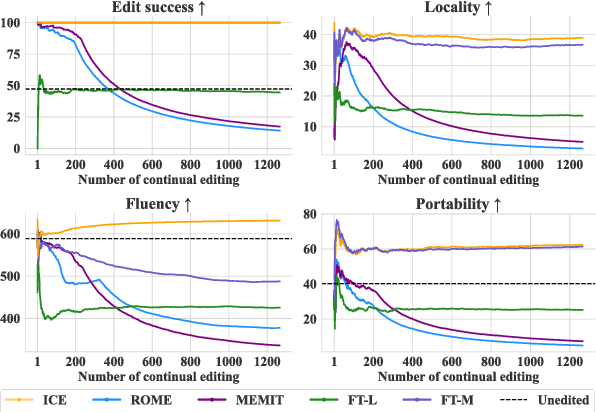

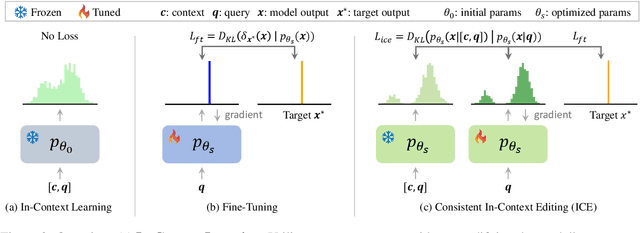

Abstract:The existing fine-tuning paradigm for language models is brittle in knowledge editing scenarios, where the model must incorporate new information without extensive retraining. This brittleness often results in overfitting, reduced performance, and unnatural language generation. To address this, we propose Consistent In-Context Editing (ICE), a novel approach that leverages the model's in-context learning capability to tune toward a contextual distribution rather than a one-hot target. ICE introduces a straightforward optimization framework that includes both a target and a procedure, enhancing the robustness and effectiveness of gradient-based tuning methods. We provide analytical insights into ICE across four critical aspects of knowledge editing: accuracy, locality, generalization, and linguistic quality, showing its advantages. Experimental results across four datasets confirm the effectiveness of ICE and demonstrate its potential for continual editing, ensuring that updated information is incorporated while preserving the integrity of the model.
M2NO: Multiresolution Operator Learning with Multiwavelet-based Algebraic Multigrid Method
Jun 07, 2024



Abstract:Solving partial differential equations (PDEs) effectively necessitates a multi-scale approach, particularly critical in high-dimensional scenarios characterized by increasing grid points or resolution. Traditional methods often fail to capture the detailed features necessary for accurate modeling, presenting a significant challenge in scientific computing. In response, we introduce the Multiwavelet-based Algebraic Multigrid Neural Operator (M2NO), a novel deep learning framework that synergistically combines multiwavelet transformations and algebraic multigrid (AMG) techniques. By exploiting the inherent similarities between these two approaches, M2NO overcomes their individual limitations and enhances precision and flexibility across various PDE benchmarks. Employing Multiresolution Analysis (MRA) with high-pass and low-pass filters, the model executes hierarchical decomposition to accurately delineate both global trends and localized details within PDE solutions, supporting adaptive data representation at multiple scales. M2NO also automates node selection and adeptly manages complex boundary conditions through its multiwavelet-based operators. Extensive evaluations on a diverse array of PDE datasets with different boundary conditions confirm M2NO's superior performance. Furthermore, M2NO excels in handling high-resolution and super-resolution tasks, consistently outperforming competing models and demonstrating robust adaptability in complex computational scenarios.
RAM: Towards an Ever-Improving Memory System by Learning from Communications
Apr 18, 2024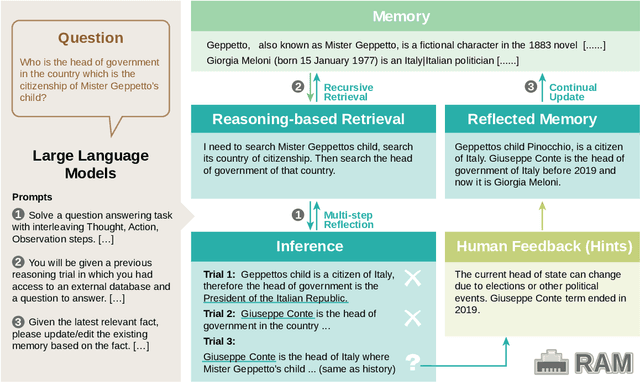
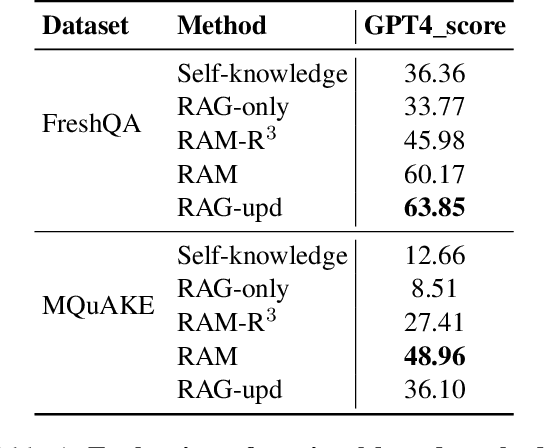
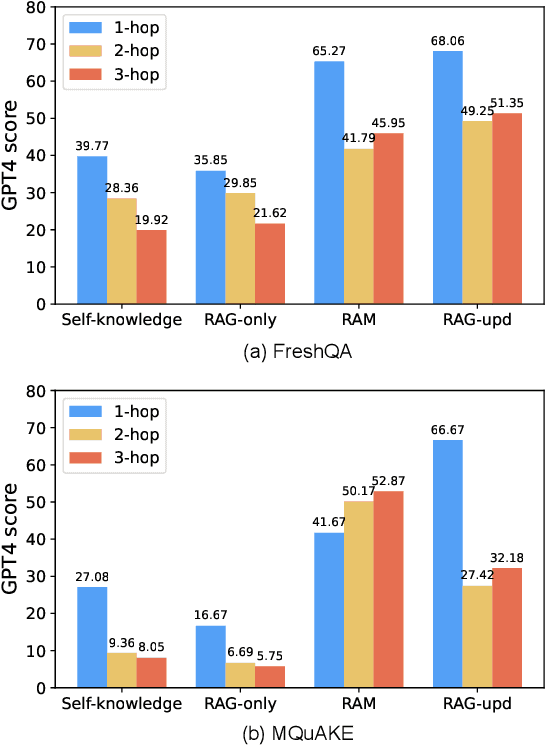

Abstract:We introduce RAM, an innovative RAG-based framework with an ever-improving memory. Inspired by humans' pedagogical process, RAM utilizes recursively reasoning-based retrieval and experience reflections to continually update the memory and learn from users' communicative feedback, namely communicative learning. Extensive experiments with both simulated and real users demonstrate significant improvements over traditional RAG and self-knowledge methods, particularly excelling in handling false premise and multi-hop questions. Furthermore, RAM exhibits promising adaptability to various feedback and retrieval method chain types, showcasing its potential for advancing AI capabilities in dynamic knowledge acquisition and lifelong learning.
PoseFace: Pose-Invariant Features and Pose-Adaptive Loss for Face Recognition
Jul 25, 2021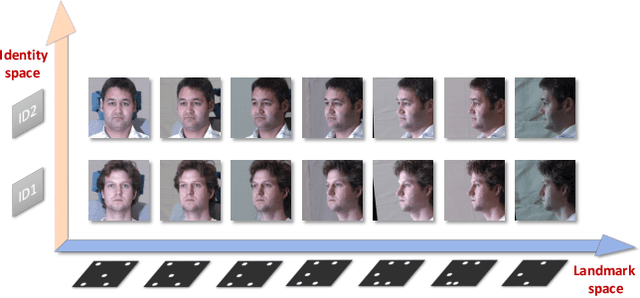

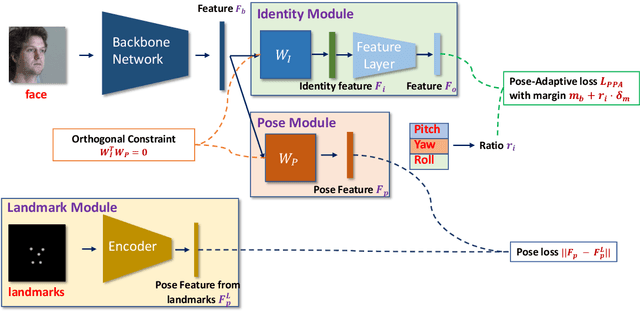

Abstract:Despite the great success achieved by deep learning methods in face recognition, severe performance drops are observed for large pose variations in unconstrained environments (e.g., in cases of surveillance and photo-tagging). To address it, current methods either deploy pose-specific models or frontalize faces by additional modules. Still, they ignore the fact that identity information should be consistent across poses and are not realizing the data imbalance between frontal and profile face images during training. In this paper, we propose an efficient PoseFace framework which utilizes the facial landmarks to disentangle the pose-invariant features and exploits a pose-adaptive loss to handle the imbalance issue adaptively. Extensive experimental results on the benchmarks of Multi-PIE, CFP, CPLFW and IJB have demonstrated the superiority of our method over the state-of-the-arts.
An Efficient Training Approach for Very Large Scale Face Recognition
Jun 04, 2021

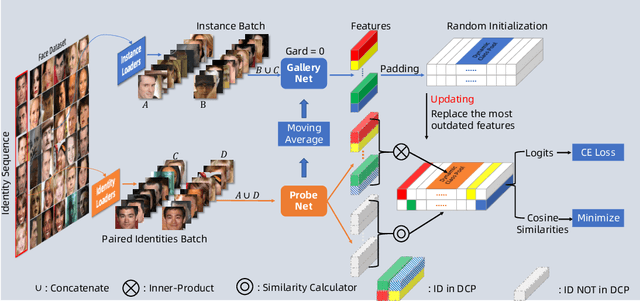

Abstract:Face recognition has achieved significant progress in deep-learning era due to the ultra-large-scale and well-labeled datasets. However, training on ultra-large-scale datasets is time-consuming and takes up a lot of hardware resource. Therefore, designing an efficient training approach is crucial and indispensable. The heavy computational and memory costs mainly result from the high dimensionality of the Fully-Connected (FC) layer. Specifically, the dimensionality is determined by the number of face identities, which can be million-level or even more. To this end, we propose a novel training approach for ultra-large-scale face datasets, termed Faster Face Classification (F$^2$C). In F$^2$C, we first define a Gallery Net and a Probe Net that are used to generate identities' centers and extract faces' features for face recognition, respectively. Gallery Net has the same structure as Probe Net and inherits the parameters from Probe Net with a moving average paradigm. After that, to reduce the training time and hardware costs of the FC layer, we propose a Dynamic Class Pool (DCP) that stores the features from Gallery Net and calculates the inner product (logits) with positive samples (whose identities are in the DCP) in each mini-batch. DCP can be regarded as a substitute for the FC layer but it is far smaller, thus greatly reducing the computational and memory costs. For negative samples (whose identities are not in DCP), we minimize the cosine similarities between negative samples and those in DCP. Then, to improve the update efficiency of DCP's parameters, we design a dual data-loader including identity-based and instance-based loaders to generate a certain of identities and samples in mini-batches.
Weakly Supervised Construction of ASR Systems with Massive Video Data
Aug 04, 2020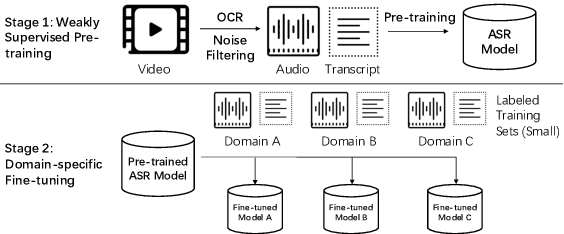
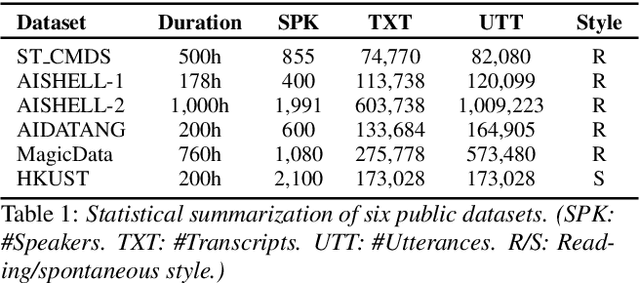
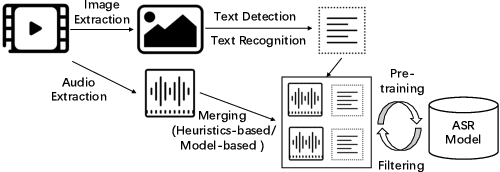

Abstract:Building Automatic Speech Recognition (ASR) systems from scratch is significantly challenging, mostly due to the time-consuming and financially-expensive process of annotating a large amount of audio data with transcripts. Although several unsupervised pre-training models have been proposed, applying such models directly might still be sub-optimal if more labeled, training data could be obtained without a large cost. In this paper, we present a weakly supervised framework for constructing ASR systems with massive video data. As videos often contain human-speech audios aligned with subtitles, we consider videos as an important knowledge source, and propose an effective approach to extract high-quality audios aligned with transcripts from videos based on Optical Character Recognition (OCR). The underlying ASR model can be fine-tuned to fit any domain-specific target training datasets after weakly supervised pre-training. Extensive experiments show that our framework can easily produce state-of-the-art results on six public datasets for Mandarin speech recognition.
 Add to Chrome
Add to Chrome Add to Firefox
Add to Firefox Add to Edge
Add to Edge